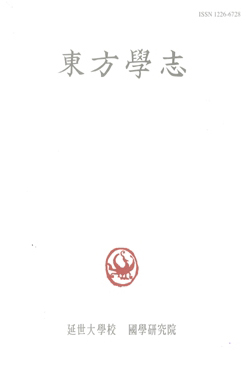식민지 시대 다방의 유입과 커피의 정착
The influx of coffee shops and the settlement of coffee during the colonial period
- 연세대학교 국학연구원
- 동방학지
- 제210집
-
2025.03269 - 297 (29 pages)
-
DOI : 10.17788/dbhc.2025..210.009
- 17

식민지 시대 문학 텍스트에는 커피를 마시거나 다방을 방문하는 장면은 자주 등장하는 반면 커피의 맛에 대한 언급은 찾기가 힘들다. 이 글은 커피에 대한 ‘취향’과 ‘맛’이 지니는 간극 사이에서 식민지 조선에 커피와 다방이 등장하고 정착되는 양상과 의미를 해명하려 했다. 『청색지』 창간호에 게재된 ‘노다객’의 「京城茶房盛衰記」는 그때까지 경성에서 문을 열고 또 폐업한 다방의 실상과 성격을 밝히고 있다. 이후 커피나 다방에 관한 논의는 한편으로 「京城茶房盛衰記」를 따르거나 다른 한편으로 시기적으로 먼저 문을 연 다방을 밝히면서 ‘노다객’의 글을 비판하기도 했다. 이 논의는 앞선 글에서 언급된 ‘후타미’와 ‘금강산’의 개업 시기를 바로 잡는 한편, 두 다방이 ‘순끽다점’이나 ‘도쿄식 끽다점’을 표방했다는 점에 유의했다. 일본에서 끽다점은 시기에 따라 둘로 구분되었는데, 이 글은 특히 1920년대 중반 이후 새롭게 등장한 후자에 주목하려 했다. ‘후타미’나 ‘금강산’에서 ‘순’이나 ‘도쿄식’이라는 수식어를 붙였던 것 역시 이와 긴밀하게 관련되어 있다. 경성에 개업한 다방에서 파는 커피는 일본과 달리 맛과 향이 뛰어나지 않았다. 식민지 조선에서 다방의 기준은 오히려 ‘커피를 마시는 기분’을 느낄 수 있는 공간인지에 있었다. 그곳은, 이상의 언급처럼, 고독한 꿈이 다른 꿈들과 위로를 나누는 공간이라는 의미를 지니고 있었다.
This study tried to explain the pattern and meaning of the influx and settlement of coffee and coffee shops in colonial Joseon in the gap between the 'favor' and 'taste' of coffee. <The raise and fall of a coffee shops in Gyeongseong(京城茶房盛衰記)> of 'a tea-drinking old man(노다객)' reveals the reality and character of coffee shops that opened and closed their doors in Gyeongseong until then. Since then, some of the discussions on coffee and coffee shops have followed <The raise and fall of a coffee shops in Gyeongseong>. On the other hand, while criticizing the article of 'a tea-drinking old man', they also moved on to revealing the tearoom that opened first in a timely manner. This study corrected the opening times of 'Futami(二見)' and 'Mt. Geumgang(금강산)' mentioned in the previous article, while noting that the two coffee houses advocated 'pure coffee shop' or 'Tokyo style coffee shop'. The modifiers 'pure' or 'Tokyo style' were also closely related to this. Coffee sold at coffee shops opened in Gyeongseong was not excellent in taste and aroma, unlike Japan. In colonial Joseon, the standard of coffee shops was rather whether it was a space where people could feel 'feeling of drinking coffee'. As Lee Sang(이상) mentioned, it was a space where lonely dreams shared comfort with other dreams.
1. 문제의 소재
2. 식민지 시대 커피와 다방; 취향과 맛의 간극
3. 경성에서 문을 열고 폐업한 다방들
4. 일본에서 다방의 정착 과정
5. 허용된 근대의 공간, 다방
6. 맺음말
(0)
(0)